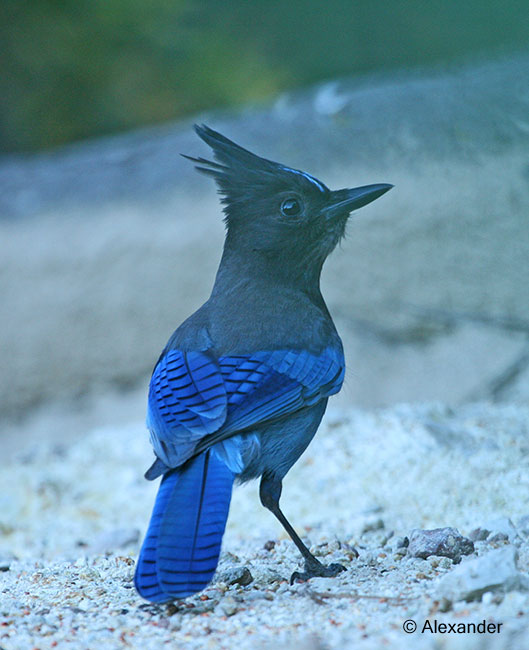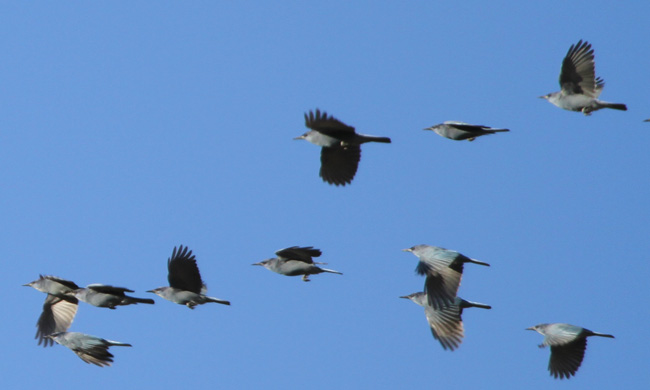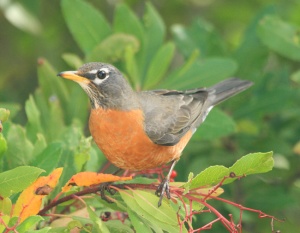All the winter thrushes are here in Northern California for the winter and a beautiful sight to enjoy every day.

American Robins are a celebrated harbinger of spring for many Americans, but here in Northern California and other temperate states, we enjoy a flurry of robins throughout the winter.
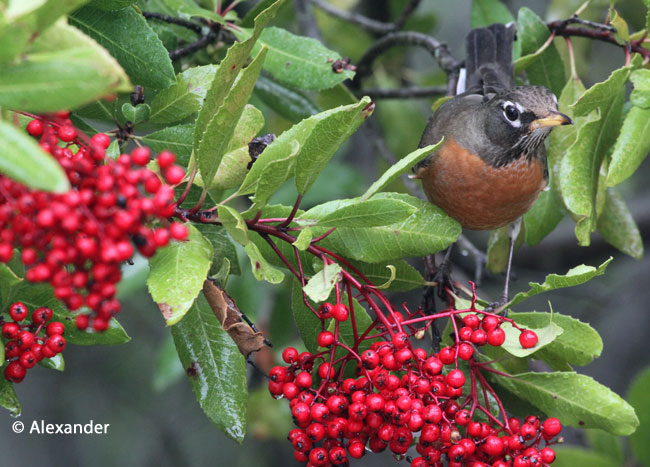
Sometimes flocks of 50-100 can be seen high in the sky. In this photo below you can see a flock of approximately 40 before they landed to join several dozen robins already in the trees.
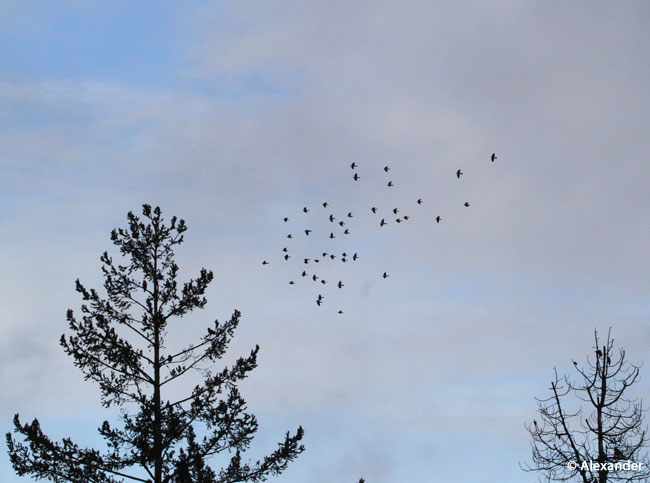
Much of the time we see them on front lawns…the classic robin sight.

There is something about robins and Americans that make the American Robin a much-loved bird.
I could go on about them here, but I want to show you three other thrush species who join us for the winter.
In winter, hermit thrushes can be seen in much of the U.S. south and the west coast. We have an individual who shows up in our garden every day, below.

Like other birds in the Turdidae family, these thrushes are often seen close to the ground. They hop, peck, hunt for insects and occasionally flick their tail while perched. When it is too cold for insects, they are in the bushes plucking berries.
This hermit thrush below was making its way across a toyon bush, one berry at a time.

Like the robin, hermit and varied thrushes migrate north to their breeding grounds in spring. Their melodious songs, therefore, are not heard here in the winter. We hear their calls, but not their songs.
Once in a while there’s a free-thinking robin who decides not to migrate, but most of their species, Turdus migratorius, migrate away when the weather warms.
The varied thrush is another special bird that joins us for the winter. Unlike the hermit thrushes and robins, varied thrushes are a western bird.
I have seen or heard varied thrushes almost every day this winter, something I think is so very fortunate. Ixoreus naevius.
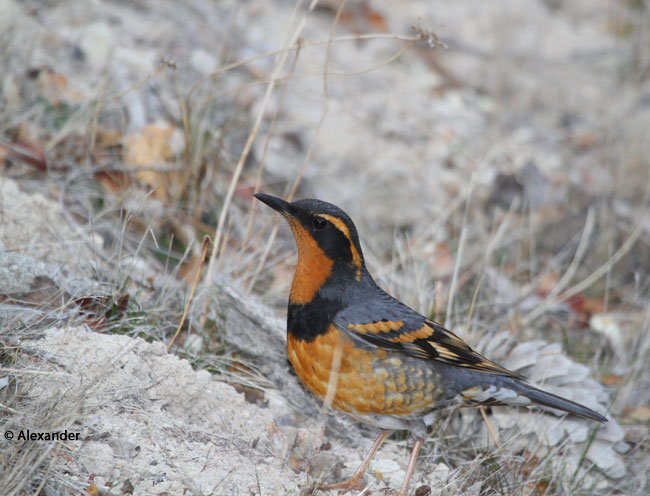
Usually solitary and skittish, they can be seen along the creeks or in the woods.
Varied thrushes have a two-toned call that is so unique it stops me in my tracks. With two sets of membranes and muscles in the vocal organs, it enables the bird to sing two different notes at the same time.
Here is a recording of their two-toned call, below. I also hear a flock of robins in the background.
Audio Recording of Varied Thrush, from Xeno-Canto.org

They can often be overlooked as “just a robin” because they are the same size and similar colors as the American Robin, but there are distinctive markings that make this bird different.

Lastly, a fourth thrush we have here in Northern California, the western bluebird, stays with us year-round. Sialia mexicana. Many folks are surprised to know that bluebirds are in the thrush family.

By springtime they are building their nests and preparing for new broods, but for now they are seen in pairs or flocks of 6-10, fluttering and flashing their sky-blue colors.

To use the lyrics from “Rockin’ Robin,” our thrushes rock in the tree tops all day long, hoppin’ and a-boppin’ and a-singing their song.

Not only do they rock in the treetops all day long, but they also bathe with abandon in the puddles and scatter about chirping when the rains have stopped.
Rockin’ thrushes.
Written by Jet Eliot.
Photos by Athena Alexander.
Lyrics by Leon Rene.
You Tube “Rockin’ Robin” by Bobby Day.




